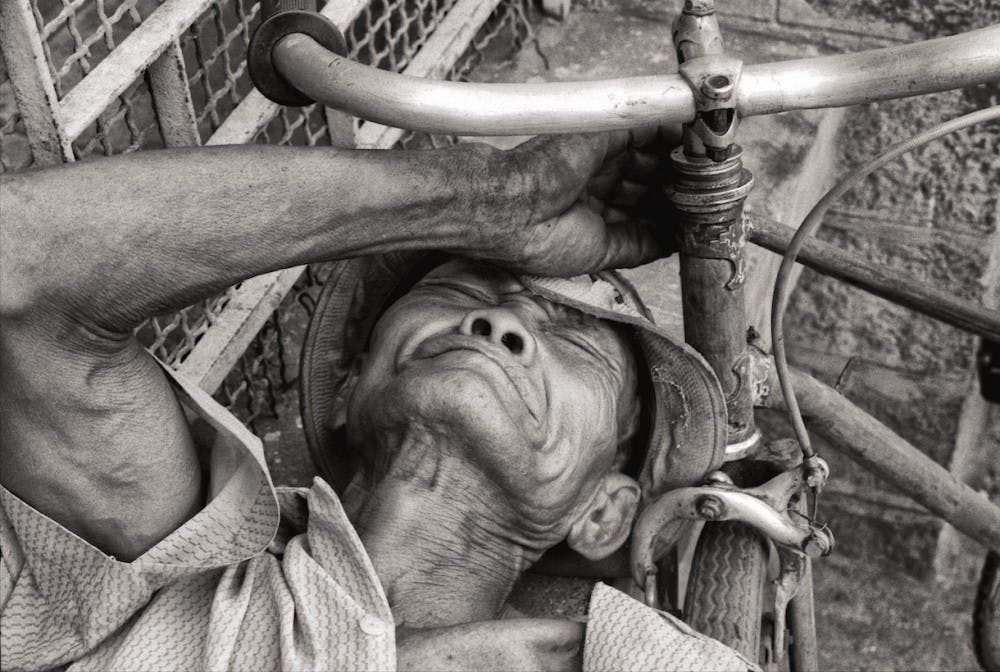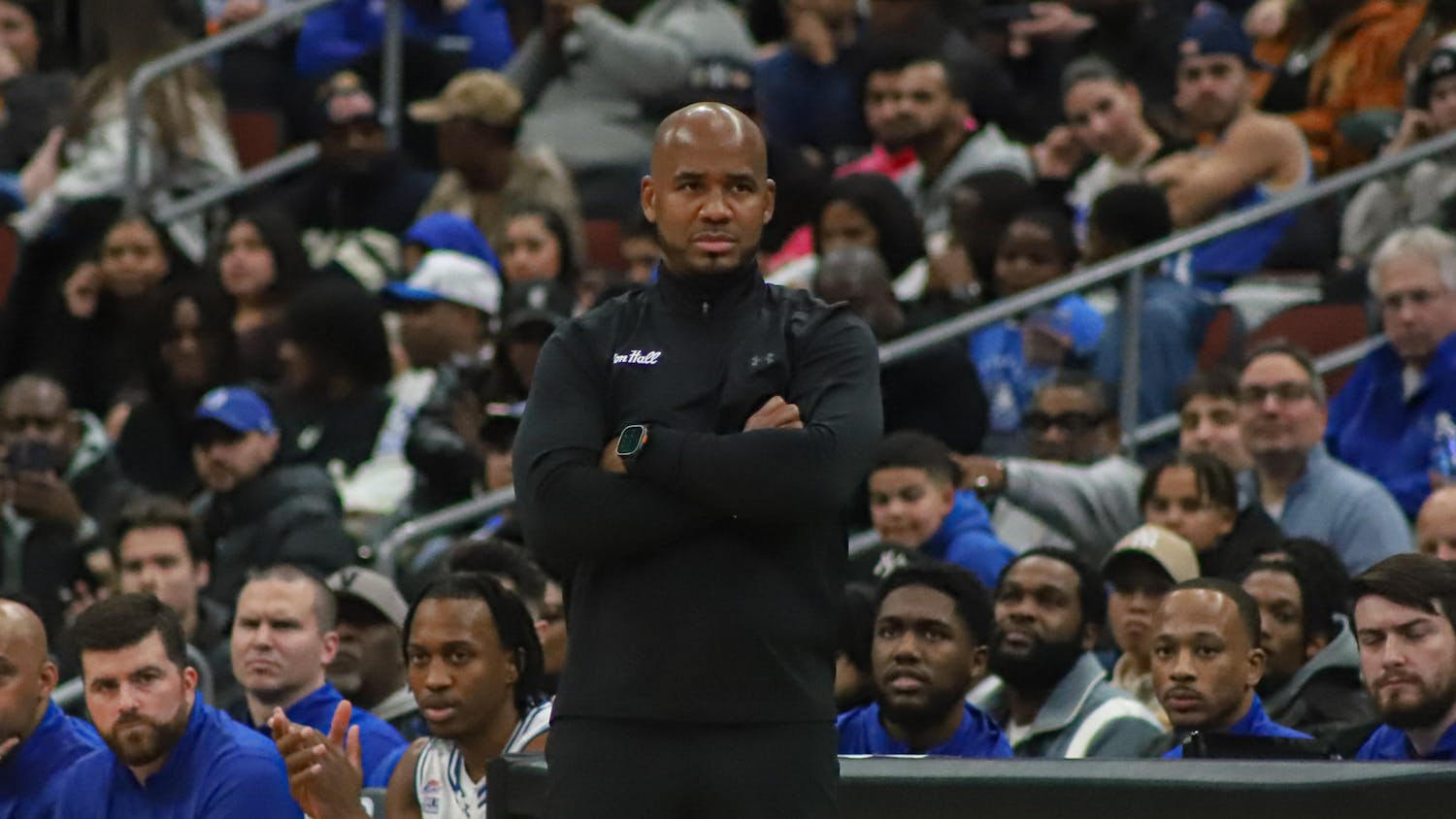[caption id="attachment_14603" align="aligncenter" width="602"] Photos courtesy of Kenneth Hoffman[/caption]
Photographs taken by Seton Hall professor Kenneth Hoffman will be displayed in a 20-image collection entitled “Vietnam Street Photographs” at the SoHo Photo Gallery from June 8 – July 2.
Hoffman captured these photos, along with approximately 1,500 others, during his time as an Army Lieutenant during the Vietnam War from June 1969 to June 1970 to reflect on his “non-military experience” with the people of Vietnam.
“In my experience, pictures often ask to be taken,” Hoffman said. “A photographer simply cannot ignore the images that present themselves to him or her in the course of living. The unifying principle of thread of my work is the road I traveled and the experience that I had.”
[caption id="attachment_14602" align="alignright" width="234"]
Photos courtesy of Kenneth Hoffman[/caption]
Photographs taken by Seton Hall professor Kenneth Hoffman will be displayed in a 20-image collection entitled “Vietnam Street Photographs” at the SoHo Photo Gallery from June 8 – July 2.
Hoffman captured these photos, along with approximately 1,500 others, during his time as an Army Lieutenant during the Vietnam War from June 1969 to June 1970 to reflect on his “non-military experience” with the people of Vietnam.
“In my experience, pictures often ask to be taken,” Hoffman said. “A photographer simply cannot ignore the images that present themselves to him or her in the course of living. The unifying principle of thread of my work is the road I traveled and the experience that I had.”
[caption id="attachment_14602" align="alignright" width="234"] Kenneth Hoffman[/caption]
Hoffman’s time in Vietnam began in June 1968, right after he had completed his MFA at NYU film school. It was then that Hoffman enlisted in the military as a direct commissioned officer, which he was eligible to do because of his film training, Hoffman said.
“The demand for news footage about the war was enormous and the Department of Defense wanted to provide information about our progress toward winning the war,” Hoffman said in an email interview.
Among the photos included in this collection is a photo called “Candy Honeymoon – US Opens Second Front”, taken by Hoffman during his R&R (Rest and Relaxation) in Hawaii, during which time he got married and went on his honeymoon.
The newspaper shown in the photo announced the U.S. incursion into Cambodia, and three days later, Hoffman was in Cambodia covering the war, supervising both still and film personnel.
[caption id="attachment_14604" align="alignright" width="228"]
Kenneth Hoffman[/caption]
Hoffman’s time in Vietnam began in June 1968, right after he had completed his MFA at NYU film school. It was then that Hoffman enlisted in the military as a direct commissioned officer, which he was eligible to do because of his film training, Hoffman said.
“The demand for news footage about the war was enormous and the Department of Defense wanted to provide information about our progress toward winning the war,” Hoffman said in an email interview.
Among the photos included in this collection is a photo called “Candy Honeymoon – US Opens Second Front”, taken by Hoffman during his R&R (Rest and Relaxation) in Hawaii, during which time he got married and went on his honeymoon.
The newspaper shown in the photo announced the U.S. incursion into Cambodia, and three days later, Hoffman was in Cambodia covering the war, supervising both still and film personnel.
[caption id="attachment_14604" align="alignright" width="228"] Kenneth Hoffman[/caption]
When Hoffman returned to the U.S. in 1972, he applied for a teaching position at SHU and began teaching film and television production. He later began teaching still photography, a class he still teaches today.
Hoffman went on to receive his Ph.D. in communication from NYU to keep up with the evolving technologies, which helped him to create a more technologically-advanced photographic curriculum at SHU.
“In 1986 I designed and obtained funding for one of the first computer graphics training laboratories in the state of New Jersey,” Hoffman added. “The rest is history.”
Hoffman’s latest exhibit in SoHo Photo Gallery is not the first time he has shared his personal work from Vietnam with the public. From 1996-2004, Hoffman hosted an interactive blog about the war, showcasing his photography as a conversation starter for veterans and those affected by the war.
Hoffman received about 5,000 commentaries on his blog and is currently in the process of compiling commentary and photography in a book for publication, an honest record of the happenings in Vietnam. Having recently returned from a reunion in Pheonix, Ariz., Hoffman says that he has maintained contact with his fellow veterans.
Hoffman says that he is preparing this exhibit for the public eye in the spirit of Vietnamese scholar Ky-Ahn D. Phan, who in 1995 expressed his desire to preserve the cultural history of Vietnam:
“The atmosphere, the settings, and the life of the time, (we) are losing fast, and we’d like to put them on CD-ROM for preservation purposes. Whatever portrait of humanity we may be able to capture, however incomplete, may be a great education to the children that follow.”
Stuart Zalka, a member at the SoHo Art Gallery, said that “the humanity that (Hoffman’s) photographs reveal is just overwhelming,” in a phone interview about the exhibit and Hoffman’s work.
Hoffman said that the photographs in his exhibit at the SoHo Photo Gallery were meant to depict “the civilians who suffered through the war.”
“I was struck most by their inner dignity, a dignity seemingly stamped into the very structure of their faces, especially in the vivid faces of the children,” Hoffman said. “In fact, the children in particular have proven to be among the most haunting images of Vietnam that I have among my recollections. I believe these photographs demonstrate that photography can capture and hold what otherwise might go unnoticed, or might eventually be forgotten…to all our losses.”
Brianna Bernath can be reached at brianna.bernath@student.shu.edu.
Kenneth Hoffman[/caption]
When Hoffman returned to the U.S. in 1972, he applied for a teaching position at SHU and began teaching film and television production. He later began teaching still photography, a class he still teaches today.
Hoffman went on to receive his Ph.D. in communication from NYU to keep up with the evolving technologies, which helped him to create a more technologically-advanced photographic curriculum at SHU.
“In 1986 I designed and obtained funding for one of the first computer graphics training laboratories in the state of New Jersey,” Hoffman added. “The rest is history.”
Hoffman’s latest exhibit in SoHo Photo Gallery is not the first time he has shared his personal work from Vietnam with the public. From 1996-2004, Hoffman hosted an interactive blog about the war, showcasing his photography as a conversation starter for veterans and those affected by the war.
Hoffman received about 5,000 commentaries on his blog and is currently in the process of compiling commentary and photography in a book for publication, an honest record of the happenings in Vietnam. Having recently returned from a reunion in Pheonix, Ariz., Hoffman says that he has maintained contact with his fellow veterans.
Hoffman says that he is preparing this exhibit for the public eye in the spirit of Vietnamese scholar Ky-Ahn D. Phan, who in 1995 expressed his desire to preserve the cultural history of Vietnam:
“The atmosphere, the settings, and the life of the time, (we) are losing fast, and we’d like to put them on CD-ROM for preservation purposes. Whatever portrait of humanity we may be able to capture, however incomplete, may be a great education to the children that follow.”
Stuart Zalka, a member at the SoHo Art Gallery, said that “the humanity that (Hoffman’s) photographs reveal is just overwhelming,” in a phone interview about the exhibit and Hoffman’s work.
Hoffman said that the photographs in his exhibit at the SoHo Photo Gallery were meant to depict “the civilians who suffered through the war.”
“I was struck most by their inner dignity, a dignity seemingly stamped into the very structure of their faces, especially in the vivid faces of the children,” Hoffman said. “In fact, the children in particular have proven to be among the most haunting images of Vietnam that I have among my recollections. I believe these photographs demonstrate that photography can capture and hold what otherwise might go unnoticed, or might eventually be forgotten…to all our losses.”
Brianna Bernath can be reached at brianna.bernath@student.shu.edu.





